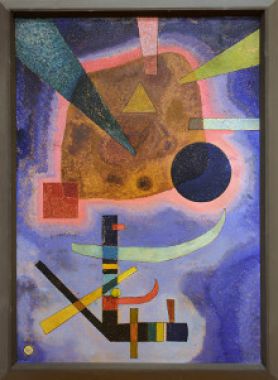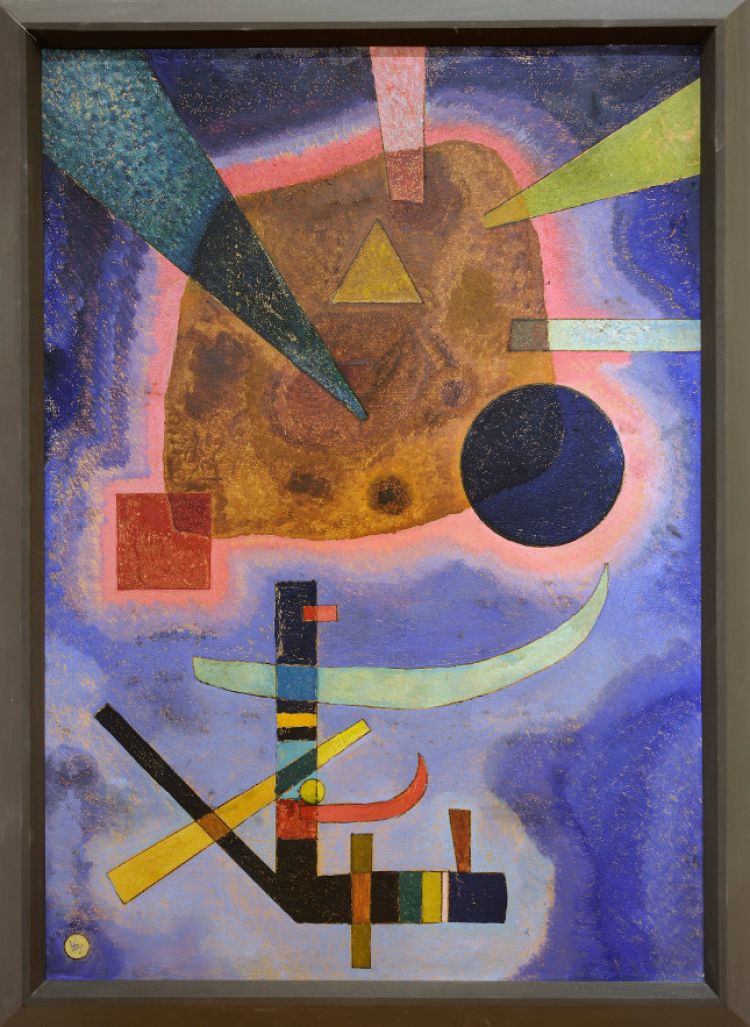Drei Elemente

Of Russian origin, Vassily Kandinsky, successively took German and then French nationality. On the Spiritual in Art, written in 1912 and Point and Line to Plane, in 1926 marked the aesthetic theories of the 20th century. In 1922, he was appointed to the Bauhaus in Weimar where he invented a pictorial "grammar" in which form, colour and organisation in space had precise functions. The musical analogy between primary colours and geometric shapes and the study of isolated elements are at the heart of his ideas on their visual effects.
Then there appear, alongside curved lines and organic shapes, the circle, the triangle and the square. While he is charmed by their simplicity, he also attributes energies to them. The circle is fullness, contained tension and closed form, but also a reference to infinity. The triangle marks upwards aspiration, the "spiritual triangle" or "pyramid of humanity". The relationships of the elements of this formal language with colour also contribute to the internal and spiritual energy of the work: right angles associated with red (square), acute angles with yellow (triangle), obtuse angles with blue (circle).
Completed in March 1925, shortly before the move from the Bauhaus to Dessau, Drei Elemente is a manifesto of his research. Blue circle, yellow triangle and red square are arranged by their pyramidal position in poles that give balance to the picture, seeming to hold in place the floating mass, its colour resulting from a mixture of primary colours. It radiates energy and the arrows entering it obey the cosmic attraction it exerts.
